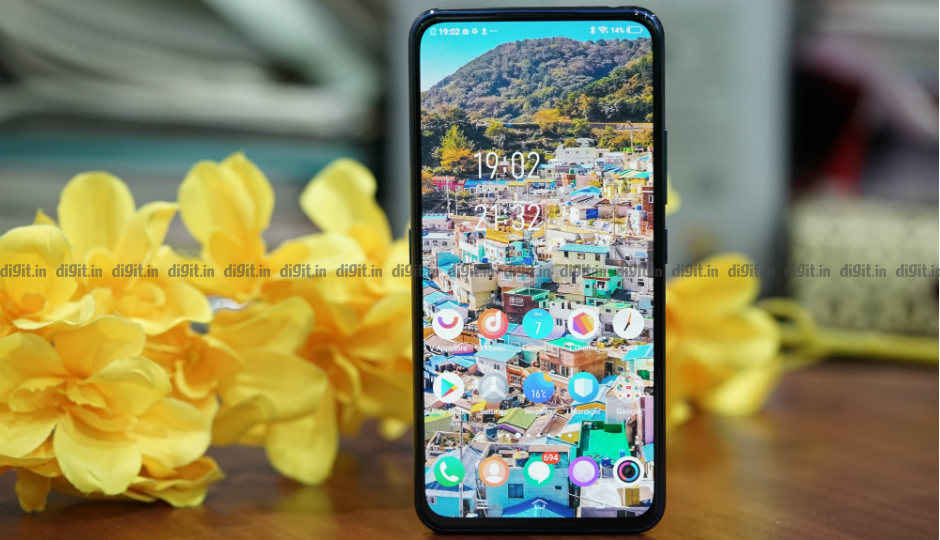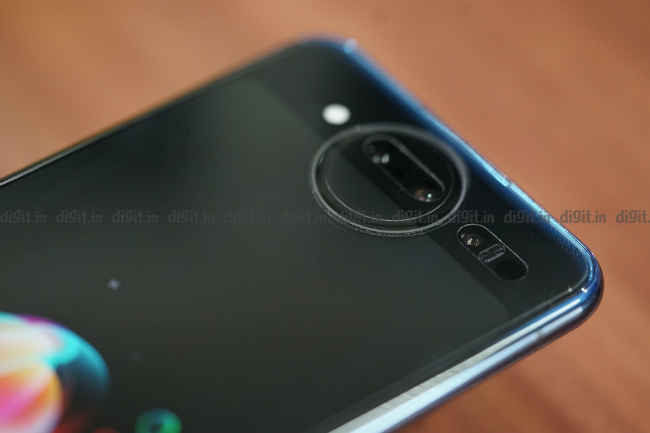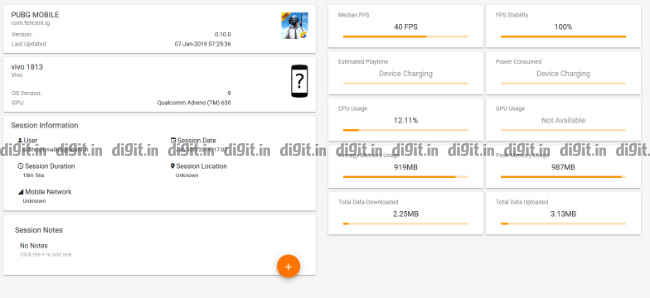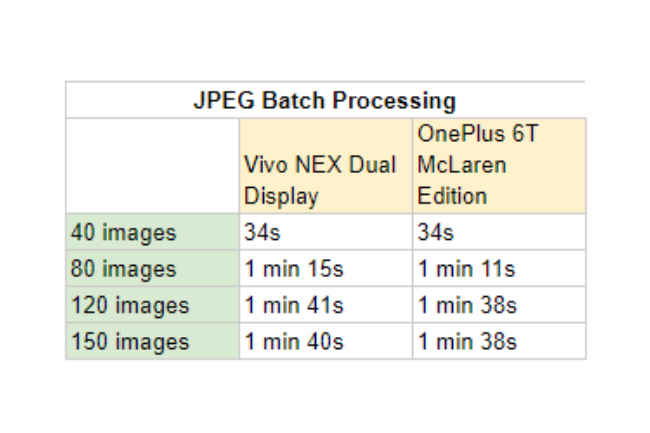Vivo NEX Dual Display: How far would you go for a bezel-less display?
On the Vivo NEX Dual Display, the dual rear camera doubles up as a selfie snapper and there’s also a giant display on the back that acts as the viewfinder.

In 2018, innovation emerged from unlikely places. While most of the manufacturers raced to put a notch on their phones, Vivo and Oppo led the charge against the asymmetric cutout in the display. Both of them did undergo the notch treatment, but quickly came out with alternatives. While Oppo adapted the whole upper portion of the phone into a movable part, Vivo put just the front camera in a mechanical pop-up module and stretched the display all the way to the edges. It looked starkly different and offered a glimpse of the future even the iPhone failed to give. The Vivo NEX took to an old form factor to get around a modern problem, but it wasn’t done just yet. Late into 2018, Vivo announced another variant of the Vivo NEX with a similar borderless screen. Only this time, it got around the notch by removing the front camera altogether.
 Survey
SurveyOn the Vivo NEX Dual Display, the dual rear camera doubles up as a selfie snapper and there’s also a giant display on the back that acts as the viewfinder. This is Vivo’s yet another attempt at defining the smartphone of the future. We are expecting phones that fold unto themselves, and such an attempt might have seemed audacious a few years ago. Not anymore.
When the Vivo NEX Dual Display landed up in our lab, it was the first phone I was genuinely excited to test after a long period of using similarly designed phones. Perhaps that’s the biggest charm of the phone. It’s future-forward in the way Back to the Future was back in 1985. A dual display phone was first seen back in the HTC One M8 which came with a proprietary case that displayed essential information on an e-ink panel. Then another obscure Russian brand came out with the Yotaphone, that carried an e-ink display on its back as well. In both cases, the extra panel wasn’t really required and ended up sucking more battery. The NEX Dual Display however, makes smart use of the two displays. Both are hardly ever on at the same time, so the battery drain is pretty much the same as other phones with AMOLED panels. In case of the NEX, you get two AMOLED panels, a 6.39-inch panel stretching edge-to-edge on the front, and another 5.49-inch panel on the back. The rear panel merges with the ring-shaped camera module. The bottom half of the module is flush with the back panel and glows in RGB colours while charging.
Are two displays better than one?
It does look quite out of the ordinary, but I wouldn’t call it intuitively beautiful. The rear panel is actually an eyesore in its implementation, but I found it useful in ways I never imaged.
For one the second display on the back helped while taking somebody else’s photograph. You know those times where you are taking a photo of a person who has a lot of inputs and makes you keep shooting in different angles and poses? That’s solved thanks to a second screen. Now the person on the other end can see how the photo will come out in real time sharing the same view you have. It then becomes easy to incorporate all the inputs.
There’s of course the obvious use-case of selfies. Since there is no camera up front, the rear camera has to be used for selfies when the display on the back comes into play. Rear cameras have always been better than the ones on the front, so the quality isn’t compromised either.
A third application is actually quite useful. It’s annoying if you’re deep into a gaming sesh, and an incoming notification makes you minimise the game and tend to it. Well, with the NEX Dual Display, you can simply switch over to the rear display, reply to the messages and come back again to the game, right where you left off.
There are a few other applications of the rear panel as well, but most are quite gimmicky if you ask me. It all boils down to how badly you want a borderless display. It certainly costs more to manufacture, as compared to a high-end phone with a single display. So you’re paying the extra premium to solve problems you never really had in the first place, and to be among the first to boast of owning a phone with a bezel-less display.
How useful is the 3D ToF sensor?
However, there’s more to the Vivo NEX Dual Display than the two panels. Apart from the 12+2MP dual camera unit on the back, there’s a third 3D Time of Flight sensor as well. This was developed by Vivo and is used to create portrait photos with various effects. Like the Honor View20, the application is quite restricted for now, but the tech itself is promising. I got a whiff of that promise in the inbuilt AR Ruler app which could accurately measure the size of my laptop’s display using the 3D camera. The camera is also used to create 3D model out of people’s faces to use as animated emojis. There’s no motion gaming, however, like in the Honor View 20. The 3D canera is also used for facial recognition while the front offers an in-display fingerprint sensor. It managed to get quite confusing for me while using. Switching the panels itself is confusing. There’s an additional button on the left to switch to the second display, along with some other ways. To switch to the rear panel, you have to press the button on the left, and to get back, you have to press the power button on the right. Quite a party trick, I tell you.
Is 10GB RAM worth it?
Just like the Doc’s DeLorean in Back to the Future looked radically futuristic and also packed a lot of horsepower, so does the Vivo NEX Dual Display. It packs the most amount of RAM seen on a smartphone before — 10GB worth, and shares the space with the OnePlus 6T McLaren Edition in India. Further, there’s the Qualcomm Snapdragon 845 under the hood and a 3500mAh battery. Throughout my usage over a week, the battery lasted most of the day even with a good dosage of gaming.
Speaking of gaming, the Vivo NEX Dual Display turned out to be one of the best phones for playing PubG Mobile. While the second display is useful for quickly replying to messages, the phone is perfectly optimised for the game as revealed by Gamebench. It recorded a median frame rate of 40 FPS with 100 percent stability, the highest we have seen on a phone. It beat even the OnePlus 6T McLaren which posted 99 percent stability. You won’t really understand the difference while using either of them, but the numbers matter for some, and if it does, the NEX is the one to go for.
On Benchmarks, the Vivo NEX surprisingly scored lesser than even the 8GB OnePlus 6T Thunder Purple in AnTuTu and 3D Mark Slingshot. On AnTuTu, it scored 294681 as compared to the 8GB OnePlus 6T’s 295197. On 3DMark Slingshot, the NEX scored just 6211 while the 8GB OnePlus 6T scored 6359. The phone failed to run Geekbench 4, and as a result we couldn’t confirm the reason the behind the lower benchmark scores. Like we noted in the OnePlus 6T McLaren Edition, it’s likely that Vivo is using a slower RAM module as well with higher memory latency and lower memory bandwidth.
We also put the 10GB RAM to test through the same hoops we made the OnePlus 6T McLaren Edition jump. In the JPEG processing test where we made the phone process a batch of 40, 80, 120 and 150 JPEG images shot from a DSLR with a cross-process filter, the NEX was slower than the 10GB RAM OnePlus 6T McLaren Edition. These were the results —
Clearly, the OnePlus 6T McLaren turned out to be faster of the two, for reasons that cannot totally be based on the hardware. Its probably the same, but the OnePlus is known to optimise its devices for speed.
In another test, we tried to stitch 16 48MP RAW images taken from the Nikon Z7 into a panorama. Most phones would fail accomplishing such a daunting task, and so did both the OnePlus 6T McLaren Edition and the Vivo NEX Dual Display. However, the NEX managed to hold on for longer, a whole 2 minute 30 seconds, even while RAM usage peaked to 95 percent. On the other hand, the OnePlus 6T ran for 2 minute 8 seconds and the RAM usage peaked to 93 percent.
Should you buy?
While there’s much more to test in the Vivo NEX Dual Display, we were left impressed by what the phone can do and what it offers. We wouldn’t go as far as recommend getting the smartphone. Heck, we don’t even know whether it will ever come out in the Indian market as Vivo has not announced any plans of launching this ambitious flagship. And if it does, it is bound to be priced higher than most high-end offerings simply for the additional display on the back. Take that out and the Vivo NEX Dual Display is still a beastly smartphone marred only by an unaesthetic UI. We are treating the phone as a glimpse into the future, but is this the future? Let us not forget that foldable phones are also gearing to make a big debut.



